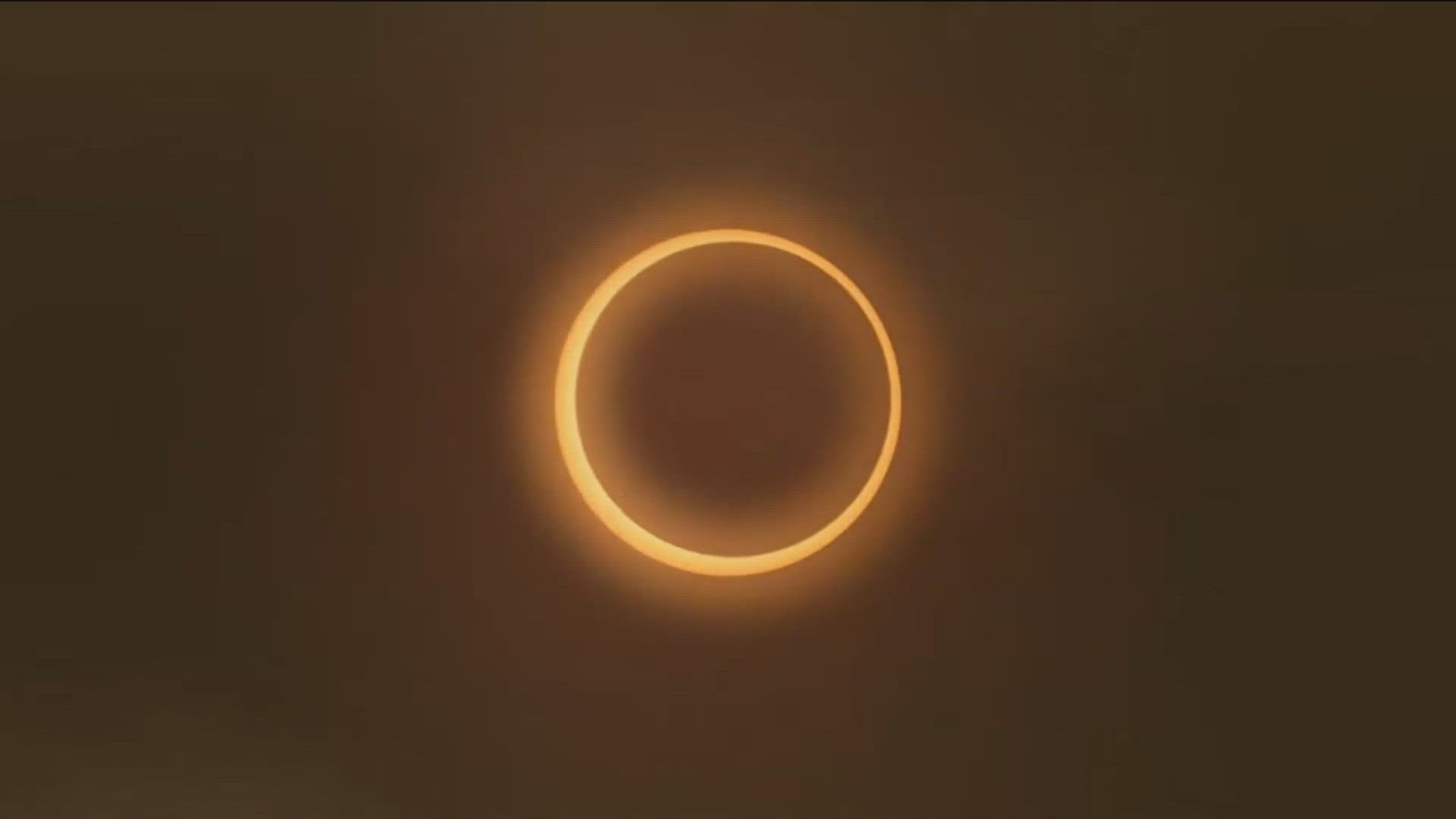WASHINGTON — Millions of Americans from Oregon to Texas will be able to see a rare "ring of fire" solar eclipse on Saturday.
The celestial event is a type of solar eclipse called an annular eclipse, during which the moon passes in front of the sun and creates the appearance of an illuminated ring in the sky. According to NASA, those in the path of annularity will be able to view the full "ring of fire" effect.
You might not want to miss Saturday's phenomenon, since it won't happen again until 2046.
What states will see the 'ring of fire' solar eclipse 2023?
The annular solar eclipse's path will pass through much of the western and southwestern U.S., including major U.S. cities like Eugene, Oregon, Albuquerque, New Mexico and San Antonio, Texas.
While those outside the path of annularity might not get to see the rare "ring of fire," many will be able to witness the moon partially block the sun.
For more information on the specific cities that are in the path of annularity, visit NASA's Where and When page.
How to see the annular solar eclipse 2023
For many in the U.S., the solar eclipse will start to be visible around 9:15 a.m. to 11:50 a.m. in local time zones on Saturday, Oct 14., according to NASA.
When the eclipse begins and how long it'll last depends on where you are in reference to the path of annularity. For some, the eclipse could be as brief as 30 seconds or as long as 5 minutes.
Weather also plays a factor in how much of the solar eclipse you'll be able to see. Although, even with a cloudy day, the daytime darkness that comes with solar eclipses will still be noticeable, NASA said.
With any solar eclipses, it's important to remember safety measures for your eyes.
Because the sun is never fully covered during an annular eclipse, it's not safe to directly look at the sun. Eclipse glasses, if you have any on hand, are recommended to protect your eyes.
However, NASA also suggests alternative ways to watch the celestial event.
When was the last 'ring of fire' solar eclipse?
The last time the U.S. saw an annular eclipse was in May 2012.
What is a 'ring of fire' solar eclipse?
During Saturday's solar eclipse, the moon and the sun will create the effect of a "ring of fire."
According to NASA, annular solar eclipses occur when the moon passes between the Earth while still being at its farthest point away from Earth. The moon, being farther away from us, appears smaller than the sun and does not fully cover it, resulting in the "ring of fire" illusion.
The word annular is derived from the Latin word "annulus" which means ring, according to TimeandDate.com
Those in the path of annularity will have as much as 90% of the sun blocked by the moon. As a result, people can feel a slight change in temperature and there will be a dimness in daylight much like during a sunset or sunrise, according to NASA.

